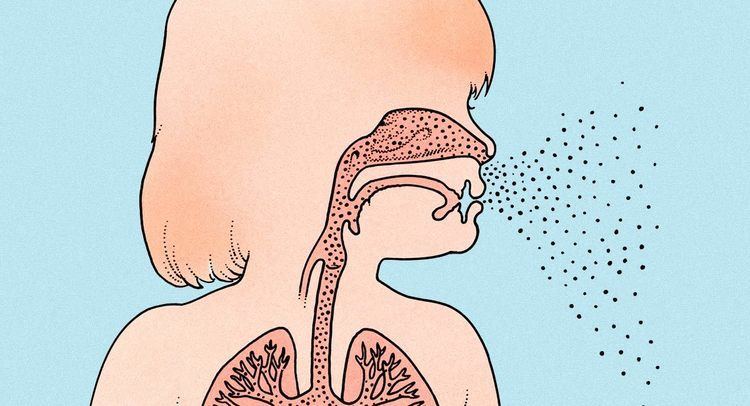ICD-10 R06.2 DiseasesDB 1715 | ICD-9-CM 786.07 MedlinePlus 003070 | |
 | ||
A wheeze (formally called "sibilant rhonchi" in medical terminology) is a continuous, coarse, whistling sound produced in the respiratory airways during breathing. For wheezes to occur, some part of the respiratory tree must be narrowed or obstructed, or airflow velocity within the respiratory tree must be heightened. Wheezing is commonly experienced by persons with a lung disease; the most common cause of recurrent wheezing is asthma attacks, though it can also be a symptom of lung cancer, congestive heart failure, and certain types of heart diseases.
Contents
The differential diagnosis of wheezing is wide, and the reason for wheezing in a given patient is determined by considering the characteristics of the wheezes and the historical and clinical findings made by the examining physician.
Characteristics
Wheezes occupy different portions of the respiratory cycle depending on the site of airway obstruction and its nature. The fraction of the respiratory cycle during which a wheeze is produced roughly corresponds to the degree of airway obstruction. Bronchiolar disease usually causes wheezing that occurs in the expiratory phase of respiration. The presence of expiratory phase wheezing signifies that the patient's peak expiratory flow rate is less than 50% of normal. Wheezing heard in the inspiratory phase on the other hand is often a sign of a stiff stenosis, usually caused by tumors, foreign bodies or scarring. This is especially true if the wheeze is monotonal, occurs throughout the inspiratory phase (i.e. is "holoinspiratory"), and is heard more proximally, in the trachea. Inspiratory wheezing also occurs in hypersensitivity pneumonitis. Wheezes heard at the end of both expiratory and inspiratory phases usually signify the periodic opening of deflated alveoli, as occurs in some diseases that lead to collapse of parts of the lungs.
The location of the wheeze can also be an important clue to the diagnosis. Diffuse processes that affect most parts of the lungs are more likely to produce wheezing that may be heard throughout the chest via a stethoscope. Localized processes, such as the occlusion of a portion of the respiratory tree, are more likely to produce wheezing at that location, hence the sound will be loudest and radiate outwardly. The pitch of a wheeze does not reliably predict the degree of narrowing in the affected airway.
A special type of wheeze is stridor. Stridor — the word is from the Latin, strīdor — is a harsh, high-pitched, vibrating sound that is heard in respiratory tract obstruction. Stridor heard solely in the expiratory phase of respiration usually indicates an upper respiratory tract obstruction, "as with aspiration of a foreign body (such as the fabled pediatric peanut)." Stridor in the inspiratory phase is usually heard with obstruction in the upper airways, such as the trachea, epiglottis, or larynx; because a block here means that no air may reach either lung, this condition is a medical emergency. Biphasic stridor (occurring during both the inspiratory and expiratory phases) indicates narrowing at the level of the glottis or subglottis, the point between the upper and lower airways.
Diagnosis
One out of 3 preschool children and 2 out of 3 school children with recurrent wheezing/coughing are allergic. The reaction creates an inflammation that, in turn, can lead to a variety of symptoms such as wheezing.
Over the last decade allergy has increased by 18% in the United States. Today one child in four is allergic. Early diagnosis of allergy is important for the development of the child later in life. There are many patients with symptoms suggesting eczema, rhinitis, hay fever, asthma or wheezing.
